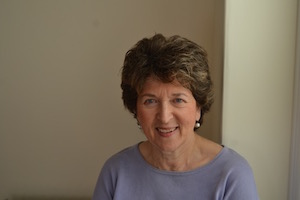Symposium Spotlight: Susan Steiner on Working 3D


Welcome to the first of our Symposium Spotlight interviews! Susan Steiner joins us to give a little of her background, her time working with Dr Upledger and her passion and focus for her presentations at our Rhythm and Resonance Symposium next September: Developing 3D Awareness while treating … plus why snorkelling is a metaphor for CST …!
Could you tell us what brought you to CranioSacral Therapy?
I am an occupational therapist by training and I was working with children in a modality called Sensory Integration in schools. I was approaching 40 and looking for a change in career. I wanted to do something more holistic and less physical so I decided on massage. Then I tried myofascial release and on the last day of that class they included some cranial work – that wet my whistle. I took my first cranial class and I was hooked!
Is that when your career with the Upledger Institute began?
Yes; I started training with the Upledger Institute in 1989, and by the winter of 1992 I was in my second advanced class. I went at it full force, approaching it as if it was my PhD at university! Dr Upledger was still teaching the SER curriculum at that time and all the advanced classes himself, as well as running the intensive programmes in Florida where you could go and shadow him.
As for my personal story, what happened was Dr John was doing his first intensive program with the Vietnam Veterans – he was very invested in trying to get cranial work into the Veterans’ organisations – and he had to finalise his choice of therapists to invite to the program. I happened to be in his face, so to speak, on the advanced class he did the weekend he had to make his final decision on the subject. I remember him saying to me ‘Steiner, I need to talk to you outside!’ I thought he was going to reprimand me for something! But he actually felt that I might have the skills to be grounded enough and focused enough to do something like this. So that actually began my career of being more known. To have Dr Upledger pick you out was quite a gift. I signed up to train to become a teacher soon after that. Now it’s 25 years later – unbelievable! – and I’ve been teaching for 20 of those 25 years.
How would you describe your passion for this work?
The phrase I always use to describe my passion for this work and what makes it so inspirational for me, is that it blends art and science. I went into the medical model because I like the body. I like the way it works, I like the science of anatomy and neurophysiology. So to blend art of touch with anatomy is perfect… I always wanted to be an artist and now i’m an artist of touch!
Could you tell us a little more about Developing 3D Awareness while treating, which you’re going to be talking about at the Symposium?
Well, we’ll be looking at how to develop 3D awareness of the skull, the membranes, the hard palate… To start with, we revisit the anatomy: all the bones, the suture lines, membrane attachments, then super impose it so you literally can ‘walk your skull’, as if you’re picturing a 3D grid inside: How deep/far in is the sphenoid? Where is the orbit of the eye? What are all those bones? Can people actually ‘walk the membranes’? So that when you hold the vault hold, you really know what you’re holding; you’re picturing visually the membranes, and treating the cranium three-dimensionally.
We’ll also look at ‘layered palpation’: when you do a diaphragm, you go through layer by layer…but often cranial people are so into sensation that they’re not into how the quality of touch is different – if it’s skin, or fascia, or bone, they really have a different quality.
How can developing more of a 3D awareness transform your practice of CST?
Techniques are taught one at a time and you’re taught to focus on one thing. But when you can put all of that together, it’s just like taking your blinders out: How deep are things? How wide are things? What’s the neighbour of this bone? A lot of advanced students are looking at how to make it richer for themselves and this makes it very rich. My metaphor is it’s like snorkelling, you go down there and you’re just like ‘Wow, it’s all going on at the same time, in synchrony!’ That’s how I see CranioSacral Therapy. It’s magical.
What is it that you’re focusing on now?
So my focus today is on the SER process and on mentoring. I’m in this decade of my life and mentoring feels important. We’re of a generation that worked with Dr John, and he’s a hero for many people, the archetype of a hero and so it feels important for people to know someone in direct line to him.
SER is in my heart – I believe that the SER model is very important and very relevant. The advanced therapists know the three-dimensional aspect and they add to that significantly…with the SD [Significance Detector] and the space that Ken Wilber calls the ‘we’ space – the space that changes when you bring a group of people together and you know more than when you’re alone…I find that fascinating. But I don’t see myself today as developing a new way to do it – I think what we do is rich enough. I’m a teacher and the more I can support people doing this work really well, the better.

Susan Steiner will be appearing at the UIUK Rhythm & Resonance Symposium in September. Full details of the programme are here
